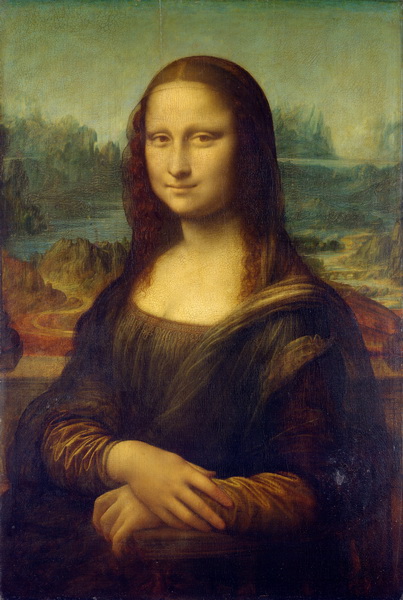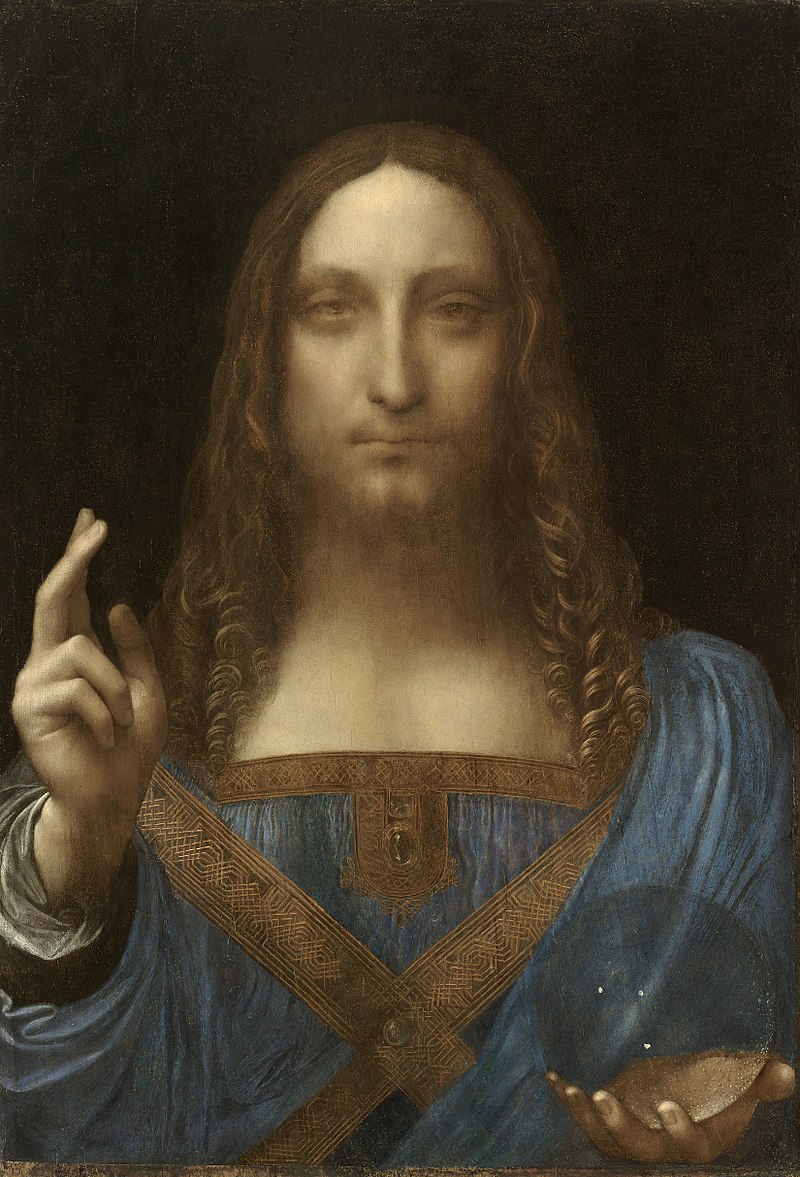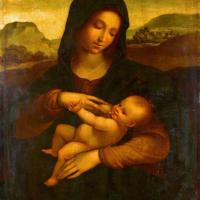Leonardo Da Vinci
Leonardo Da Vinci
Leonardo di ser Piero da Vinci (15 April 1452 – 2 May 1519), more commonly Leonardo da Vinci or simply Leonardo, was an Italian polymath of the Renaissance whose areas of interest included invention, drawing, painting, sculpting, architecture, science, music, mathematics, engineering, literature, anatomy, geology, astronomy, botany, writing, history, and cartography. He has been variously called the father of palaeontology, ichnology, and architecture, and he is widely considered one of the greatest painters of all time. Sometimes credited with the inventions of the parachute, helicopter, and tank, he epitomised the Renaissance humanist ideal.

Many historians and scholars regard Leonardo as the prime exemplar of the "Universal Genius" or "Renaissance Man", an individual of "unquenchable curiosity" and "feverishly inventive imagination", and he is widely considered one of the most diversely talented individuals ever to have lived. According to art historian Helen Gardner, the scope and depth of his interests were without precedent in recorded history, and "his mind and personality seem to us superhuman, while the man himself mysterious and remote". Marco Rosci notes that, while there is much speculation regarding his life and personality, his view of the world was logical rather than mysterious, although the empirical methods he employed were unorthodox for his time.
Leonardo was born out of wedlock to notary Piero da Vinci and a peasant woman named Caterina in Vinci in the region of Florence, and he was educated in the studio of Florentine painter Andrea del Verrocchio. Much of his earlier working life was spent in the service of Ludovico il Moro in Milan. He later worked in Rome, Bologna, and Venice, and he spent his last years in France at the home awarded to him by Francis I of France.
Leonardo is renowned primarily as a painter. The Mona Lisa is the most famous of his works and the most parodied portrait, and The Last Supper is the most reproduced religious painting of all time. His drawing of the Vitruvian Man is also regarded as a cultural icon, being reproduced on items as varied as the euro coin, textbooks, and T-shirts. His painting Salvator Mundi sold for $450.3 million at a Christie's auction in New York on 15 November 2017, the highest price ever paid for a work of art. Perhaps 15 of his paintings have survived. Nevertheless, these few works compose a contribution to later generations of artists rivalled only by that of his contemporary Michelangelo, together with his notebooks, which contain drawings, scientific diagrams, and his thoughts on the nature of painting.

Detail of Mona Lisa (1503–1506) by Leonardo da Vinci, Louvre

The Last Supper
Leonardo is revered for his technological ingenuity. He conceptualised flying machines, a type of armoured fighting vehicle, concentrated solar power, an adding machine, and the double hull. Relatively few of his designs were constructed or even feasible during his lifetime, as the modern scientific approaches to metallurgy and engineering were only in their infancy during the Renaissance. Some of his smaller inventions, however, entered the world of manufacturing unheralded, such as an automated bobbin winder and a machine for testing the tensile strength of wire. A number of his most practical inventions are displayed as working models at the Museum of Vinci. He made substantial discoveries in anatomy, civil engineering, geology, optics, and hydrodynamics, but he did not publish his findings and they had no direct influence on later science.
Despite the recent awareness and admiration of Leonardo as a scientist and inventor, for the better part of four hundred years his fame rested on his achievements as a painter. A handful of works that are either authenticated or attributed to him have been regarded as among the great masterpieces. These paintings are famous for a variety of qualities that have been much imitated by students and discussed at great length by connoisseurs and critics. By the 1490s Leonardo had already been described as a "Divine" painter.
Among the qualities that make Leonardo's work unique are his innovative techniques for laying on the paint; his detailed knowledge of anatomy, light, botany and geology; his interest in physiognomy and the way humans register emotion in expression and gesture; his innovative use of the human form in figurative composition; and his use of subtle gradation of tone. All these qualities come together in his most famous painted works, the Mona Lisa, the Last Supper, and the Virgin of the Rocks.
Leonardo was not a prolific painter, but he was a most prolific draftsman, keeping journals full of small sketches and detailed drawings recording all manner of things that took his attention. As well as the journals there exist many studies for paintings, some of which can be identified as preparatory to particular works such as The Adoration of the Magi, The Virgin of the Rocks and The Last Supper. His earliest dated drawing is a Landscape of the Arno Valley, 1473, which shows the river, the mountains, Montelupo Castle and the farmlands beyond it in great detail.
Among his famous drawings are the Vitruvian Man, a study of the proportions of the human body; the Head of an Angel, for The Virgin of the Rocks in the Louvre; a botanical study of Star of Bethlehem; and a large drawing (160×100 cm) in black chalk on coloured paper of The Virgin and Child with St. Anne and St. John the Baptist in the National Gallery, London. This drawing employs the subtle sfumato technique of shading, in the manner of the Mona Lisa. It is thought that Leonardo never made a painting from it, the closest similarity being to The Virgin and Child with St. Anne in the Louvre.
Other drawings of interest include numerous studies generally referred to as "caricatures" because, although exaggerated, they appear to be based upon observation of live models. Vasari relates that if Leonardo saw a person with an interesting face he would follow them around all day observing them. There are numerous studies of beautiful young men, often associated with Salai, with the rare and much admired facial feature, the so-called "Grecian profile".[s] These faces are often contrasted with that of a warrior. Salai is often depicted in fancy-dress costume. Leonardo is known to have designed sets for pageants with which these may be associated. Other, often meticulous, drawings show studies of drapery. A marked development in Leonardo's ability to draw drapery occurred in his early works. Another often-reproduced drawing is a macabre sketch that was done by Leonardo in Florence in 1479 showing the body of Bernardo Baroncelli, hanged in connection with the murder of Giuliano, brother of Lorenzo de' Medici, in the Pazzi conspiracy. In his notes, Leonardo recorded the colours of the robes that Baroncelli was wearing when he died.
Some 20 years after Leonardo's death, Francis was reported by the goldsmith and sculptor Benvenuto Cellini as saying: "There had never been another man born in the world who knew as much as Leonardo, not so much about painting, sculpture and architecture, as that he was a very great philosopher."
A painting by Leonardo, Salvator Mundi, depicting Jesus Christ holding an orb sold for a world record $450.3 million at a Christie's auction in New York, 15 November 2017. The highest price previously paid for a work of art at auction was for Pablo Picasso's Les Femmes d'Alger, which sold for $179.4 million in May 2015 at Christie's New York. The highest known sale price for any artwork was $300 million, for Willem de Kooning's Interchange, sold privately in September 2015 by the David Geffen Foundation to hedge fund manager Kenneth C. Griffin.

Salvator Mundi (English: Savior of the World)
Source: Wiki





